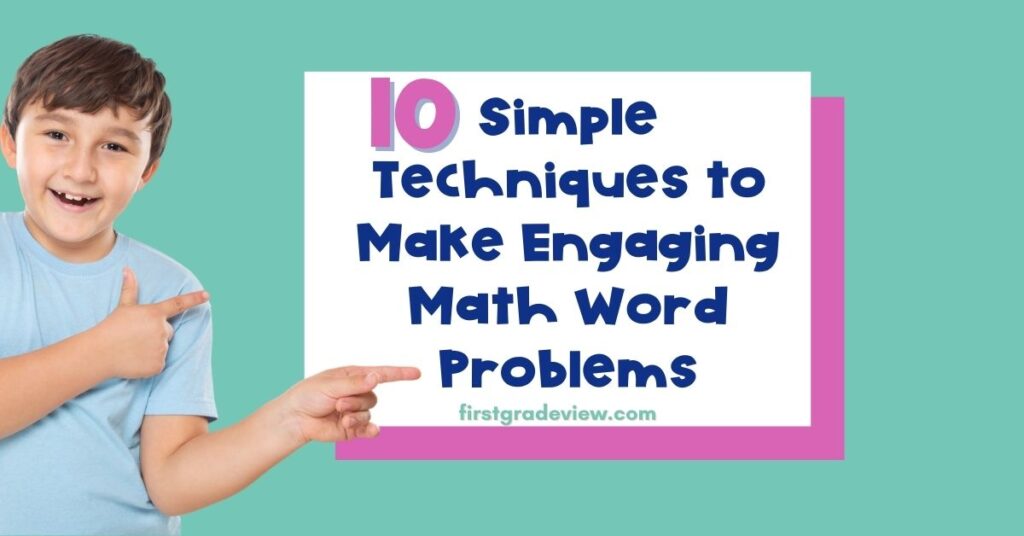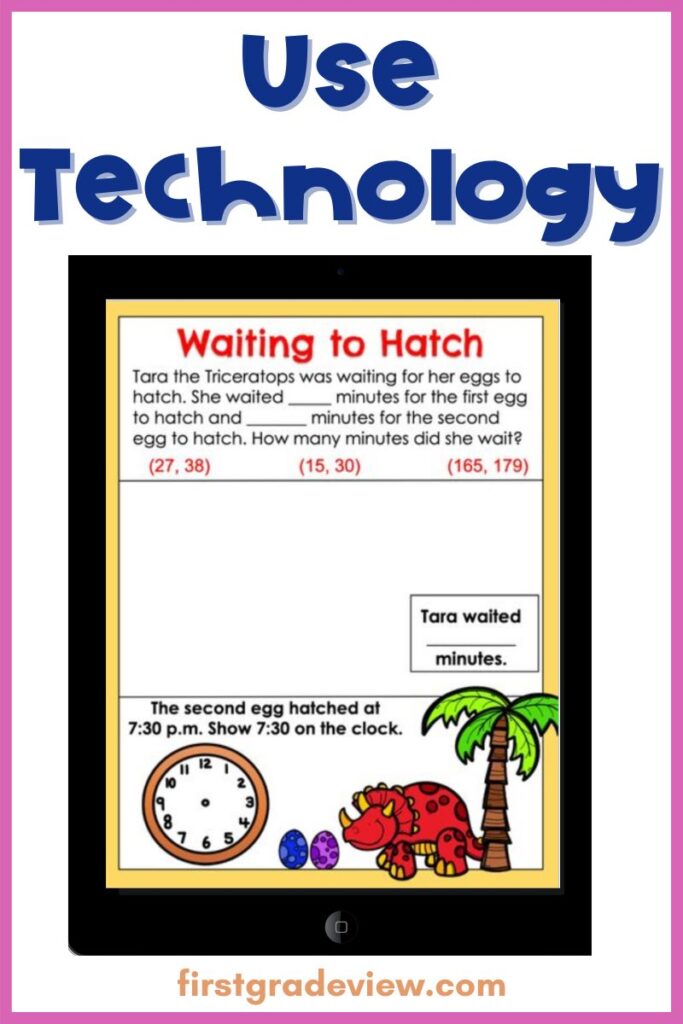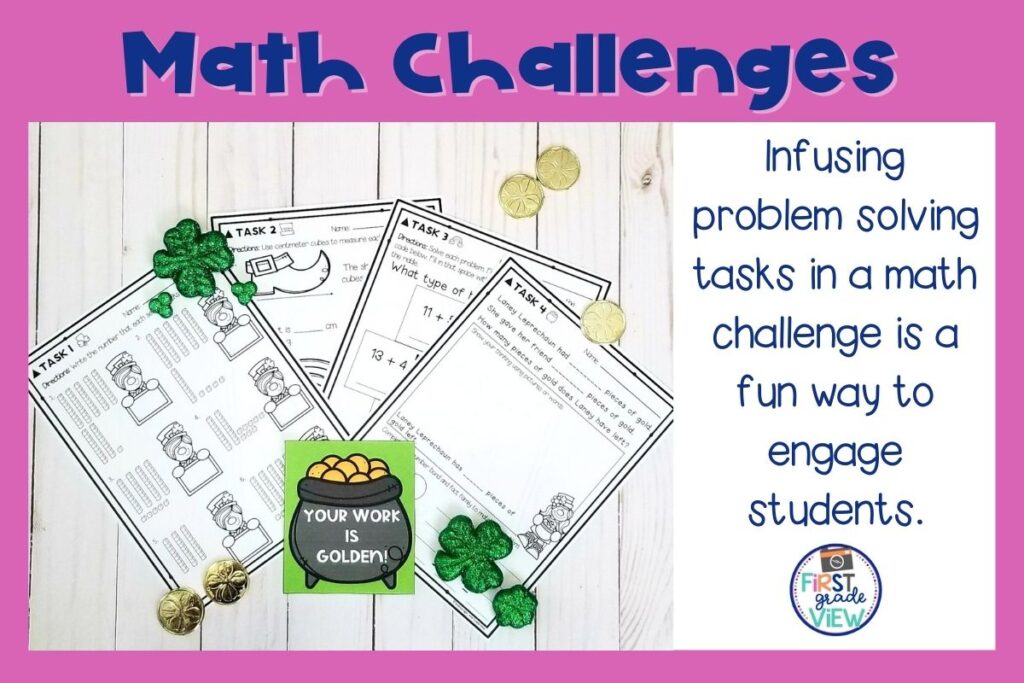Imagine this scenario: you hand out the math workbook, and the word problem inside is about as thrilling as watching paint dry for your students. Boring, right? Well, worry not! If you’re on a mission to turn those uninspiring math moments into engaging math word problems, you’re in the right place. This post will explore 10 fresh and fabulous ideas that guarantee your students won’t just solve word problems – they’ll be practically begging for more! Let’s dive into the realm of math problem solving excitement!

10 Ideas for Engaging Math Word Problems
1. Spark Curiosity with Catchy Visuals
Kick things off with an attention-grabbing intro for a word problem! Cue the catchy visuals in the form of an image or video. For example, you could show a video of buddies sharing some pizzas, cutting it into equal slices like true math wizards. Now, the real fun begins. The word problem– figuring out how many slices each buddy scores, reinforcing the concept of division and fair sharing. By hooking students from the start, they will be very motivated to solve the problem.

2. Hands-On Opportunities
A great way to get students actively involved in the problem solving game is by giving them hands-on opportunities. Picture this: you toss in a bunch of practice clocks, and bam, suddenly time-related word problems become a hands-on adventure. Or how about having students show their solution to a word problem using base ten blocks? Letting students dive into the problem-solving universe by using manipulatives? That’s not just smart; it’s a ton of fun!

3. Notice and Wonder
The “Notice and Wonder” strategy is a total game-changer for unpacking math word problems. First, take a numberless word problem and ask, “What do you notice?” Then ask, “What do you wonder?” Students should unleash their inner math detective by asking questions. Where’s the missing info? What’s the connection between the different parts of the number story? Get those gears turning! The “Notice and Wonder” strategy promotes a deeper understanding of word problems by encouraging students to be active observers and doers of mathematics.
4. Bet Lines
Imagine diving into the word problems with a secret weapon: the Mathematical Bet Line strategy. Mathematical Bet Lines are a discussion strategy, where you read a story problem stopping at crucial spots. At each stop, students make a prediction or “bet” about what’s coming next. As more details unfold, students adjust their predictions on the fly. Finally, after all the information has been revealed, students make a final “bet” on what they think the question to the story problem will be. This strategy gets students to slow down so they can make sense of and conquer those tricky word problems.

5. Engage With Picture Books
Picture books aren’t just pages filled with colorful illustrations; they’re full of inspiration for crafting engaging math word problems that captivate young learners. Imagine delving into a tale about animals in the jungle, and suddenly, math problems become thrilling adventures amidst the vines and leaves. Picture books effortlessly transport students to imaginative realms, making the process of solving word problems an exciting journey. So, harness the magic of storytelling to spark the flame of mathematical curiosity in first graders.
6. Differentiated Number Sets
Alright, let’s talk about jazzing up those number sets, because, you know, our students are at various levels at any given time! We’re all about meeting them where they’re at, and the secret sauce is differentiation. Picture this: multiple number sets catering to all levels – below grade, on grade, and flying high above grade. Now, when we whip up those word problems, we offer multiple quantities, letting our mathematicians choose their challenge level. It’s like a customized math feast, and everyone gets a seat at the table.

7. Collaborative Problem Solving
Gather your crew, because we’re diving into collaborative problem-solving. Round up your math partners and tackle those word problems together. No solo missions here! We’re all about the buddy system, where discussion and shared understanding are the name of the game. And guess what? Open-ended word problems work perfectly for partner work.
8. Personalized Word Problems
Alright, let’s make math feel like a personalized adventure! Throw a dash of your students’ world into the mix with personalized word problems. Create engaging math word problems using your students’ names, include their interests, and maybe even share a joke or two things happening in your classroom. It’s like giving math a backstage pass to their lives, making those problems way more interesting and, dare I say, cool.
9. Use Technology
Time to integrate age-appropriate digital tools or apps that provide interactive and engaging ways to solve word problems. Virtual manipulatives and interactive visuals can enhance the learning experience for your students. One of my favorite tools for this is Seesaw. Best of all, students can record their work and share their strategies with you!

10. Games and Challenges
Time to sprinkle some fun onto our math routine with games and challenges! We’re turning those word problems into epic showdowns – think game night but with a math twist. Students can work in teams or solo. Points, rewards, and a dash of friendly competition – that’s the secret sauce. It’s like turning math into a game show where everyone’s a winner. These math challenges aren’t just fun; they can be a go-to strategy for a bit of spiral review or spicing things up at the end of a unit. Let the games begin!

Transform your word problem game with these strategies! By weaving these techniques into your teaching toolkit, math word problems won’t just be problems anymore – they’ll be the highlight of your class. Picture this: engaged students, meaningful learning, and a deep dive into the wonderful world of math concepts. These strategies aren’t just about solving problems; they’re about creating math adventures that stick. So buckle up teacher friends, and get ready to sprinkle a bit of magic onto your math lessons. Tell me, what ideas would you add to this list?
Want to try these techniques with done for you word problems? Click the image below to grab these addition and subtraction problems.

You May Also Like:
How to Turn Your Hands-On Math Activity From Zero to Hero
Types of Story Problems in Math
Solving Story Problems in Math: How to Teach The Most Powerful Routine





